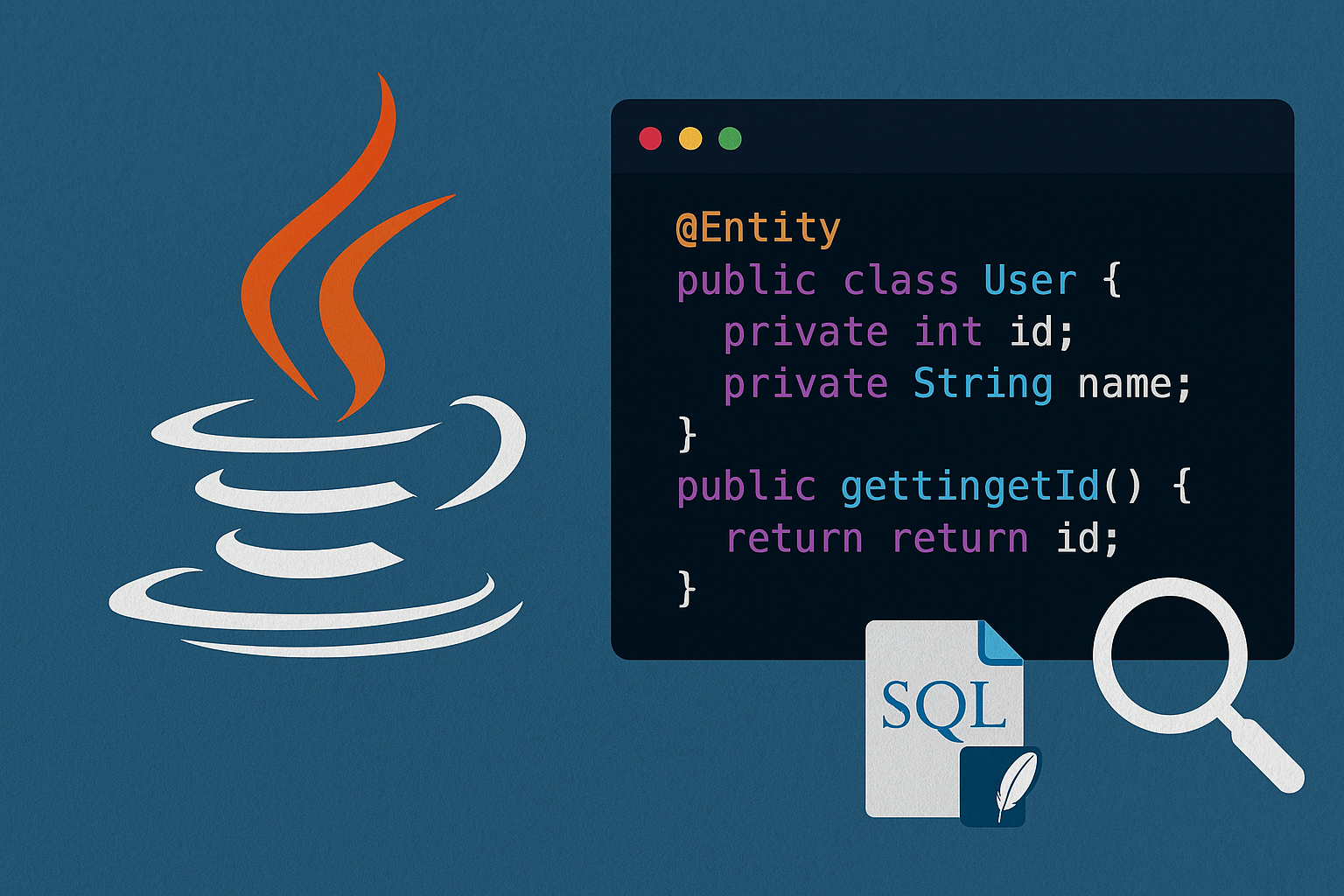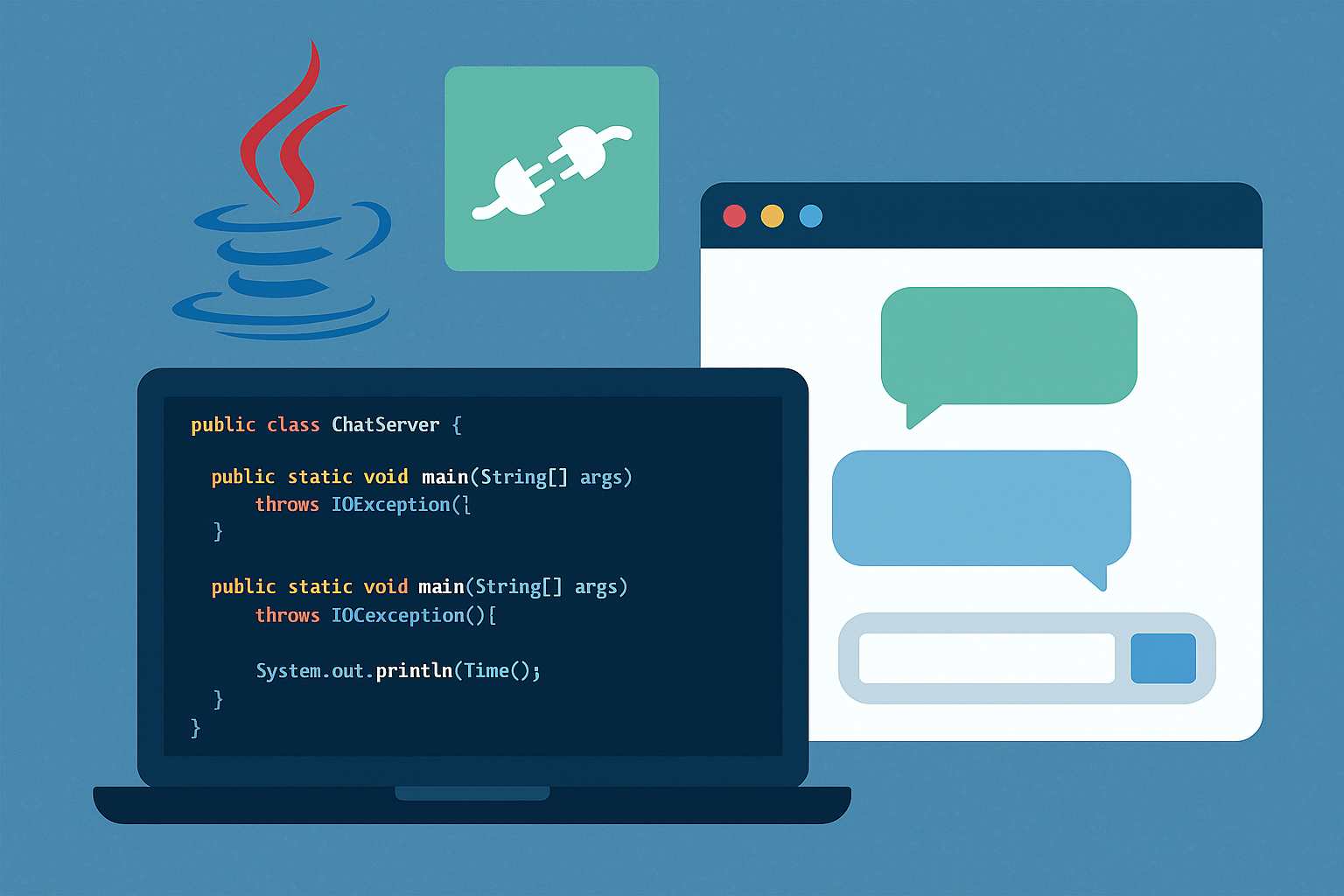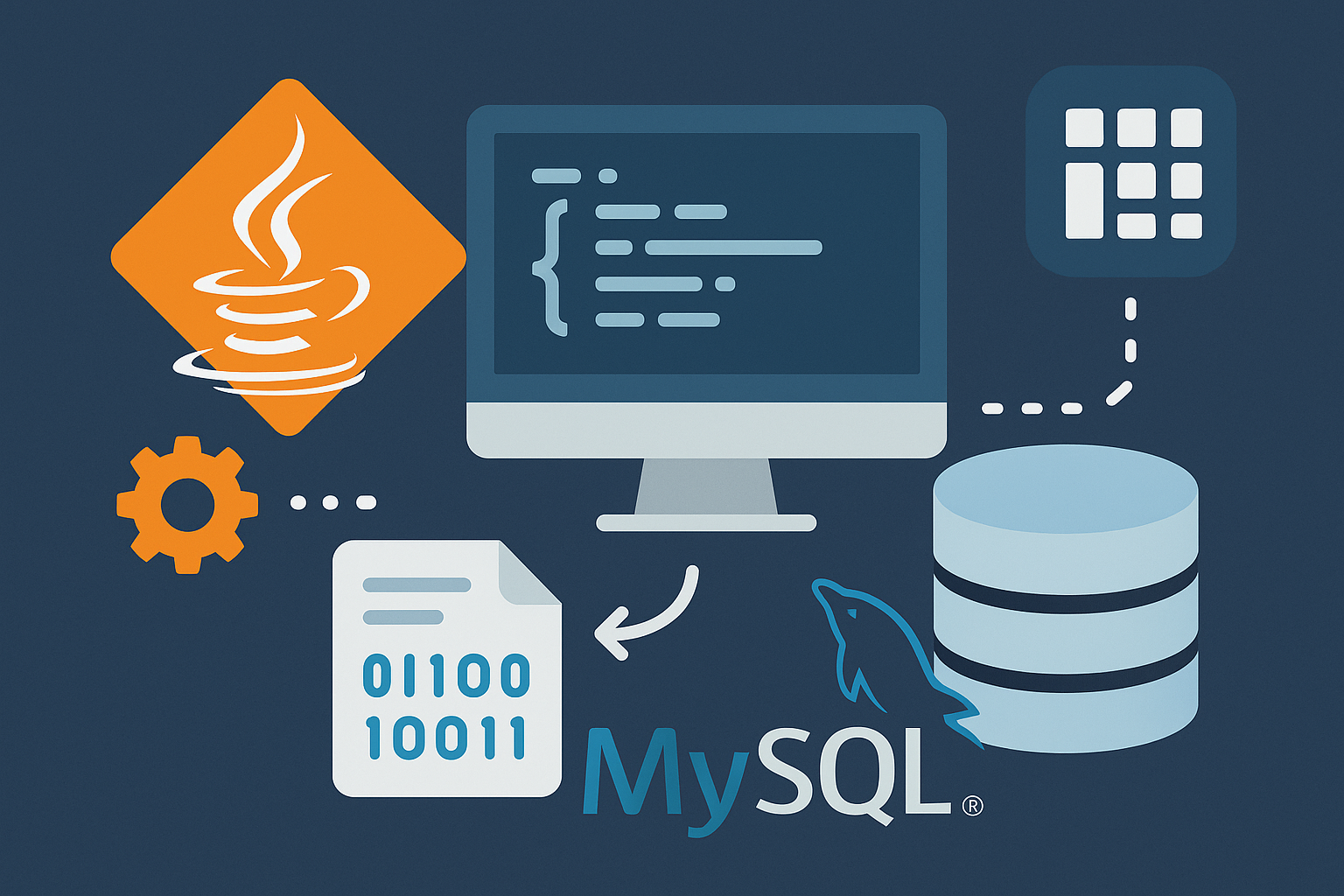"I'm using Hibernate and JPA, but I want to know how they work."
"I want to create a process that automatically generates SQL."
For those who feel that way, we recommendMy experience creating an ORM library in Javais.
In this article, we will use reflection, annotations, and dynamic generation of SQL strings to
How to create a simple ORM library that even beginners can buildof,
Easy to understand explanation with codeI will do it.
- What is an ORM Library?
- Understand the basic structure of your own ORM
- Annotation definition: Entity.java / Column.java
- Example of an entity class: User.java
- ORM main processing: OrmManager.java
- Usage example: Main.java
- Common errors and solutions
- Enhance practicality with application ideas
- Summary of the completed configuration
- Summary: If you understand the mechanism, you can apply it freely
What is an ORM Library?
A mechanism for easily handling SQL operations in code
Conclusion: ORM is a mechanism that links databases and Java classes.
Traditionally, database operations required writing SQL statements.
But with an ORM, you can do things like this without having to write SQL statements:
- Retrieving data (SELECT)
- Data registration (INSERT)
- Update data (UPDATE)
- Delete data (DELETE)
This means:Maintainability, readability, and safetywill be greatly improved.
Understand the basic structure of your own ORM
Design a minimally functional configuration
Conclusion: A simple ORM can be built with just the following four files.
1 | |
Annotation definition: Entity.java / Column.java
1 | |
1 | |
Example of an entity class: User.java
1 | ) ) ) ) |
ORM main processing: OrmManager.java
1 | )) { 0202); |
Usage example: Main.java
1 | 1 |
Output:
1 | '1', , ); |
Common errors and solutions
- Annotations are ignored
→@Retention(RetentionPolicy.RUNTIME)Not set - IllegalAccessException in Field.get()
→field.setAccessible(true)Be sure to execute - Nulls in SQL
→nullCheck it"NULL"Added conversion processing to
Enhance practicality with application ideas
- Added SQL execution function (
Connection.prepareStatement()etc.) - Supports generation of update, delete and search SQL
- Automatic primary key detection and validation added
@IdDefine the primary key using annotations
Summary of the completed configuration
- Entity/Column.java: Class and DB bridging annotation
- OrmManager.java: Logic for constructing SQL from annotations
- User.java: Entity instance
- Main.java: Code for checking operation
Summary: If you understand the mechanism, you can apply it freely
In this article,How to create your own ORM library in JavaWe explained the following.
Lessons learned:
- How to use reflection
- Defining and Using Annotations
- Automation logic for constructing SQL
Advanced frameworks such as Hibernate are also supported.
The fundamental mechanism is a stack of structures like those discussed in this article.is.
Once you try making one yourself, your understanding of how to use it will be much deeper.
Please try it yourself!ORM development based on the mechanismGive it a try!


